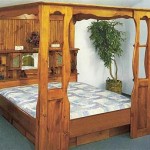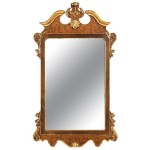How To Make A Frame For An Oval Mirror
Creating a custom frame for an oval mirror enhances its aesthetic appeal and allows it to seamlessly integrate with a specific home decor style. This process, while requiring some planning and skill, is achievable for individuals with basic woodworking knowledge and access to essential tools. This article provides a comprehensive guide on constructing a frame for an oval mirror, covering material selection, measurement techniques, cutting processes, assembly methods, and finishing options.
Choosing the Right Materials and Tools
The selection of appropriate materials is fundamental to the success of any framing project. Wood is the most common choice due to its versatility, workability, and aesthetic properties. The type of wood selected will influence the overall appearance and durability of the frame. Popular options include pine, poplar, maple, and oak, each offering distinct grain patterns and hardness levels. Pine and poplar are generally more affordable and easier to work with, making them suitable for beginners. Maple and oak provide a more refined look and are more durable, but they also require more advanced woodworking skills.
Beyond the wood itself, consider the type of finish that will be applied to the frame. Factors such as stain, paint, or varnish will influence the final look and feel. Select a finish that complements the surrounding decor and provides adequate protection for the wood.
The required tools for this project are also crucial for achieving precise and professional results. A miter saw is essential for making accurate angled cuts, particularly for the corners of the frame. A jigsaw or bandsaw is necessary for cutting the curved shapes that will accommodate the oval mirror. A router, equipped with a rabbeting bit, creates a recess on the inside of the frame to hold the mirror securely. Clamps are vital for holding the pieces together during gluing and assembly. Sandpaper, in various grits, is used to smooth the wood surfaces before finishing. Finally, measuring tools, such as a tape measure, ruler, and compass, are essential for accurate layouts and dimensions.
Safety equipment is equally important. Safety glasses protect the eyes from flying debris, and a dust mask or respirator protects the respiratory system from sawdust. Earplugs or earmuffs reduce noise exposure during sawing and routing operations.
Accurate Measurement and Planning
Precise measurements are paramount in creating a frame that fits the oval mirror perfectly. Begin by carefully measuring the mirror's overall dimensions, specifically the length and width at its widest points. Record these measurements accurately.
Next, determine the desired width of the frame. This is a matter of personal preference and should be proportional to the size of the mirror and the style of the surrounding decor. A wider frame creates a more substantial look, while a narrower frame offers a more minimalist aesthetic. Once the frame width is decided, add twice this width to both the length and width measurements of the mirror. This will determine the overall outside dimensions of the frame.
Creating a template of the oval shape is helpful for ensuring accuracy in the cutting process. One method is to use a large piece of paper or cardboard and draw the oval shape based on the mirror's measurements. A more precise method involves using a compass and string to create the oval. Fix two points on the paper or cardboard, representing the foci of the oval. Attach the ends of the string to these points. Then, holding a pencil taut against the string, move it around the foci to draw the oval shape. The distance between the foci and the length of the string will determine the shape and size of the oval.
Once the template is created, it can be used to transfer the oval shape onto the wood. Trace the template onto the wood, ensuring that the grain direction is oriented in a visually pleasing and structurally sound manner. Consider how the grain pattern will appear once the frame is assembled and finished.
Cutting and Shaping the Frame Components
The process of cutting the frame components requires precision and careful attention to detail. Start by cutting the wood to the overall outside dimensions calculated earlier. Use a miter saw to make accurate 45-degree miter cuts at each corner. The miter cuts should be precise to ensure that the frame corners fit together seamlessly. Double-check the accuracy of the miter cuts using a speed square or protractor.
Next, cut the inner oval shape. This is a more challenging step that requires either a jigsaw or a bandsaw. Securely clamp the wood to a stable work surface. Carefully follow the traced oval line with the saw, maintaining a consistent distance from the line. It is advisable to cut slightly outside the line initially, leaving some excess material. This allows for fine-tuning and sanding to achieve a perfectly smooth and accurate oval shape.
Once the inner oval shape is cut, use a router with a rabbeting bit to create a recess on the inside of the frame. This recess will hold the mirror securely in place. The depth of the rabbet should be slightly greater than the thickness of the mirror. The width of the rabbet should be sufficient to accommodate the mirror and any backing material that may be used.
Take multiple passes with the router, gradually increasing the depth of the rabbet with each pass. This prevents the router bit from overheating and reduces the risk of tear-out. Use a fence or guide to ensure that the rabbet is consistent in width and depth around the entire inner oval. After routing, inspect the rabbet for any imperfections or unevenness. Use sandpaper to smooth any rough edges or inconsistencies.
Assembling and Finishing the Frame
Assembling the frame requires careful alignment and secure bonding of the mitered corners. Apply wood glue to the mitered surfaces, ensuring that the glue covers the entire surface area. Use clamps to hold the corners together tightly. The clamps should be positioned so that they apply even pressure to the corners, ensuring a strong and seamless joint.
Reinforcement of the mitered corners is often necessary to provide additional strength and prevent the frame from separating over time. One method of reinforcement is to use corner clamps or miter clamps. These clamps apply pressure at a 90-degree angle, ensuring that the corners remain square and aligned during the gluing process. Another method is to use brad nails or staples to secure the corners. Drive the brad nails or staples at an angle into the mitered joints, providing mechanical reinforcement.
Allow the glue to dry completely according to the manufacturer's instructions. This typically takes at least 24 hours. Once the glue has dried, remove the clamps and inspect the frame for any gaps or imperfections in the mitered corners.
Sanding is a crucial step in preparing the frame for finishing. Start with a coarser grit sandpaper, such as 120 grit, to remove any imperfections or unevenness in the wood surface. Gradually progress to finer grit sandpaper, such as 220 grit or 320 grit, to create a smooth and polished surface. Sand with the grain of the wood to prevent scratching. Thoroughly remove all sanding dust with a tack cloth or vacuum cleaner.
The final step is to apply the desired finish to the frame. This could be stain, paint, varnish, or a combination of these. If using stain, apply it evenly with a brush or rag, following the grain of the wood. Allow the stain to penetrate the wood for the recommended amount of time, and then wipe off any excess stain with a clean rag. If using paint, apply multiple thin coats, allowing each coat to dry completely before applying the next. This will create a more durable and even finish.
Varnish provides a protective layer that enhances the durability of the frame and protects it from moisture and scratches. Apply multiple thin coats of varnish, allowing each coat to dry completely before applying the next. Lightly sand between coats of varnish with fine grit sandpaper to create a smooth and even surface.
Once the finish has dried completely, carefully insert the mirror into the rabbeted recess. Secure the mirror in place with glazing points or mirror clips. These small metal pieces are inserted around the perimeter of the mirror to hold it securely in the frame. A backing board can be added to provide additional support and protection for the mirror. The backing board can be made from plywood, hardboard, or foam board. Secure the backing board to the frame with screws or brad nails.

Diy Oval Mirror Frame Domestically Speaking

I Need An Idea To Frame My Oval Shaped Bathroom Mirrors Hometalk

Diy Oval Mirror Frame Domestically Speaking

Framing Oval Mirror With Mosaic Tile Bathroom Frame

Gold Plastic Oval Mirror Makeover Confessions Of A Serial Do It Yourselfer

16 Diy Mirror Home Decor Ideas Hawthorne And Main Frame

I Need An Idea To Frame My Oval Shaped Bathroom Mirrors Hometalk

Diy Mirror Frame Upcycle That

15 Thrifty Mirror Makeovers Confessions Of A Serial Do It Yourselfer

How To Frame A Bathroom Mirror Lowe S Wall Diy Design








